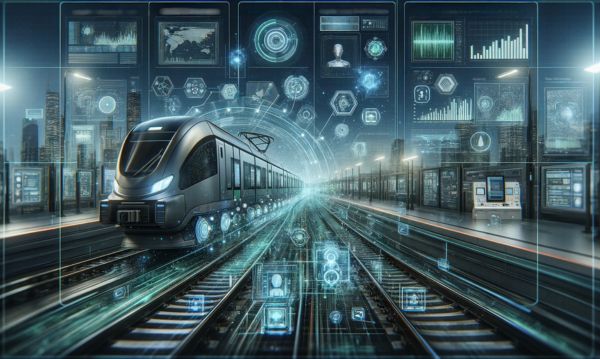In the constant evolution of transport, the integration of artificial intelligence (AI) and advanced data analysis has proven to be a decisive factor, especially in the field of rail transport. This dynamic duo is transforming the way flow management is handled in the rail industry, optimizing efficiency, enhancing safety, and ultimately redefining the future of transportation.
How AI and data analysis are transforming rail transport
Predictive maintenance for enhanced reliability
One of the significant contributions of AI in rail transport is its ability to enable predictive maintenance. Through the implementation of machine learning algorithms, rail operators can predict potential faults and failures in train components before they occur. This not only reduces unexpected breakdowns but also ensures that maintenance activities are scheduled proactively, minimizing downtime and optimizing the overall reliability of rail services.
Real-time monitoring and control
AI and data analysis provide rail operators with real-time information about the status of their entire fleet. Sensors and monitoring devices installed on trains collect vast amounts of data, ranging from engine performance to component health. This real-time data is then analyzed using AI algorithms to make instant decisions on route optimization, speed control, and even the adjustment of schedules based on unforeseen circumstances. The result is a more responsive and agile rail network capable of adapting quickly to changing conditions.

Dynamic scheduling and route optimization
Traditional rail schedules are often static, leading to inefficiencies when faced with unexpected events. AI-driven algorithms, coupled with sophisticated data analysis, enable dynamic scheduling and route optimization. By considering real-time factors such as weather conditions, track availability, and congestion levels, AI can recommend or automatically adjust schedules to minimize delays and optimize the flow of trains through the network. This not only improves punctuality but also enhances overall network capacity.
Enhanced safety measures
Safety is paramount in rail transport, and AI plays a pivotal role in bolstering safety measures. Computer vision and sensor technologies contribute to the development of automated systems that can detect potential hazards, monitor track conditions, and even predict potential collisions. These AI-powered safety features provide an additional layer of protection, reducing the risk of accidents and enhancing the overall safety profile of rail transport systems.
Data-driven decision-making for efficiency
Data analysis is at the heart of AI applications in rail flow management. By harnessing the power of big data, operators can gain valuable insights into passenger behavior, demand patterns, and operational efficiency. This data-driven approach allows for informed decision-making, leading to better resource allocation, improved service quality, and a more customer-centric rail transport experience.
For more information click here
